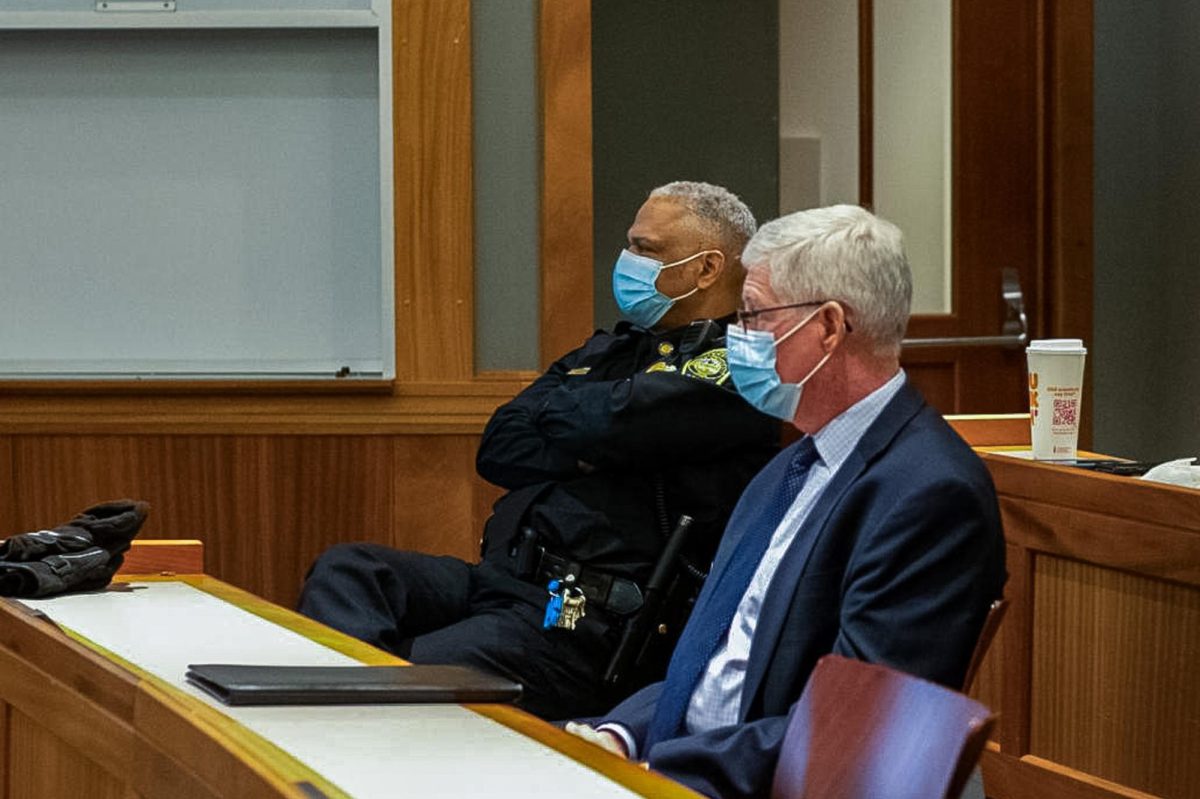Ethan Long
Journal Staff
While tens of thousands flocked to Central Park this weekend to celebrate the 70th birthday of the late, ex-Beatle John Lennon, select theaters across the country screened a new biopic based around the teenage years of his life. Nowhere Boy (2010, Weinstein Company) is only the latest of many recreations of Lennon’s life on film. Other entries such as Backbeat (1994, Gramercy Pictures) and Chapter 27 (2007, Peace Arch Entertainment Group) haven’t been well received by the critics or fans, but the general reaction to this latest attempt has been positive.
As the debut feature by director Sam Taylor-Wood, the film serves as a love letter to the idol himself. Lennon (Aaron Johnson of Kick-Ass) is depicted exactly the way he should be – as a troubled young man who has yet to really understand his role in life. Living with his Aunt Mimi, Lennon soon begins a relationship with the woman who had him, his mother, Julia Lennon. As the film progresses eventually it becomes evident that he never really had her.
Along with being a period piece focusing on Merseyside, England during its post-war years, the heart of the film is a soap opera-like family drama. The years depicted are the shakiest of Lennon’s life, due to the fact that his mother wasn’t really the mother he expected, but a friend, and that his Aunt would have none of it.
With two women fighting for his affection, Lennon is torn between his fun-loving mother and his strict aunt, who raised him into the man he eventually became. While Aunt Mimi was his guardian, it was the time with his mother that Lennon’s songs reflect on. As shown in the film, Julia taught her son how to play chords on the banjo, which led to John’s decision to take up guitar and form a band. Every note John has ever played on an instrument is directly reflective of the short amount of time he was able to spend with her before she was taken from him, when a car driven by an off-duty police officer ran her over.
With help from those who knew Lennon, scenes were recreated from personal accounts and stories. These fill up the film. Paul McCartney himself, who we meet after Lennon be comes cheeky towards him, was in correspondence with the filmmakers while the movie was in production. Lennon’s second wife, Yoko Ono, also provided information.
Throughout the movie, subtle references are made about issues such as incest, social class, and domestic abuse. One scene in particular addresses ‘mod vs. rocker’, as Lennon is seen walking outside of a jazz venue, the Cavern Club, where he’s threatened and denied admission. Today, the same club is known for hosting the Beatles during their early years.
The film itself is prone to a confused pace, as time jumps without warning. Within twenty minutes of each other, Paul joins “the Quarrymen” – a skiffle group John formed, and then George Harrison joins. One day, John’s being suspended from school, and then it seems that just a few months later he’s already leaving for Hamburg. This could have been helped by some sort of MM/YYYY format layered on top of the scene cuts, but in the end the concept of time was missing.
The acting in the film is superb. Johnson does a great job capturing the sarcastic, sometimes selfish personality of Lennon. Sir Paul McCartney is portrayed by actor Thomas Brodie Sangster, who doesn’t really look like him, yet you know it’s Paul from the second he shows up. Sangster really plays McCartney. It’s as if they were the same person. The body language is spot on. The relationship between the two is only a hint of the strong bond they would share, break, and share again in the future. Kristin Scott Thomas and Anne-Marie Duff, as Aunt Mimi and Julia Lennon respectively, both give amazing performances that deserve to be recognized by the Academy. Their characters are complete opposites, with different views on almost everything yet they still end up ‘remembering’ that they were sisters. It’s very believable because of the love for John that their characters show throughout the movie.
From the opening chord of Hard Day’s Night, which cuts to Lennon running away while looking back, to the only use of Lennon’s actual voice during the use of his song Mother at the end of the movie, Nowhere Boy truly cements this time of his life in a film capsule. The film can easily be viewed as a fill-in for those looking for a bit of Beatles back-story. While the all around Beatles-feel is there, which includes stage banter, girls screaming, and a heavy use of rhythm and blues, the film is certainly not about the Beatles. Maybe the greatest gift the filmmakers gave was that the word Beatles isn’t even uttered once.
Overall, the film is a great entry into the Beatles universe. Unlike The Social Network, the film doesn’t spice anything up for greater dramatic effect. Anyone who says that John didn’t have as much sex or smoke as many cigarettes as the film shows him to do is truly missing the point. John wasn’t the best role model, yet he became one shortly after the film’s time period ends. Nowhere Boy shows a troubled human instead of a marketing tool. This film will help the public learn more about a man whose music is most likely played every second of everyday somewhere in the world.







